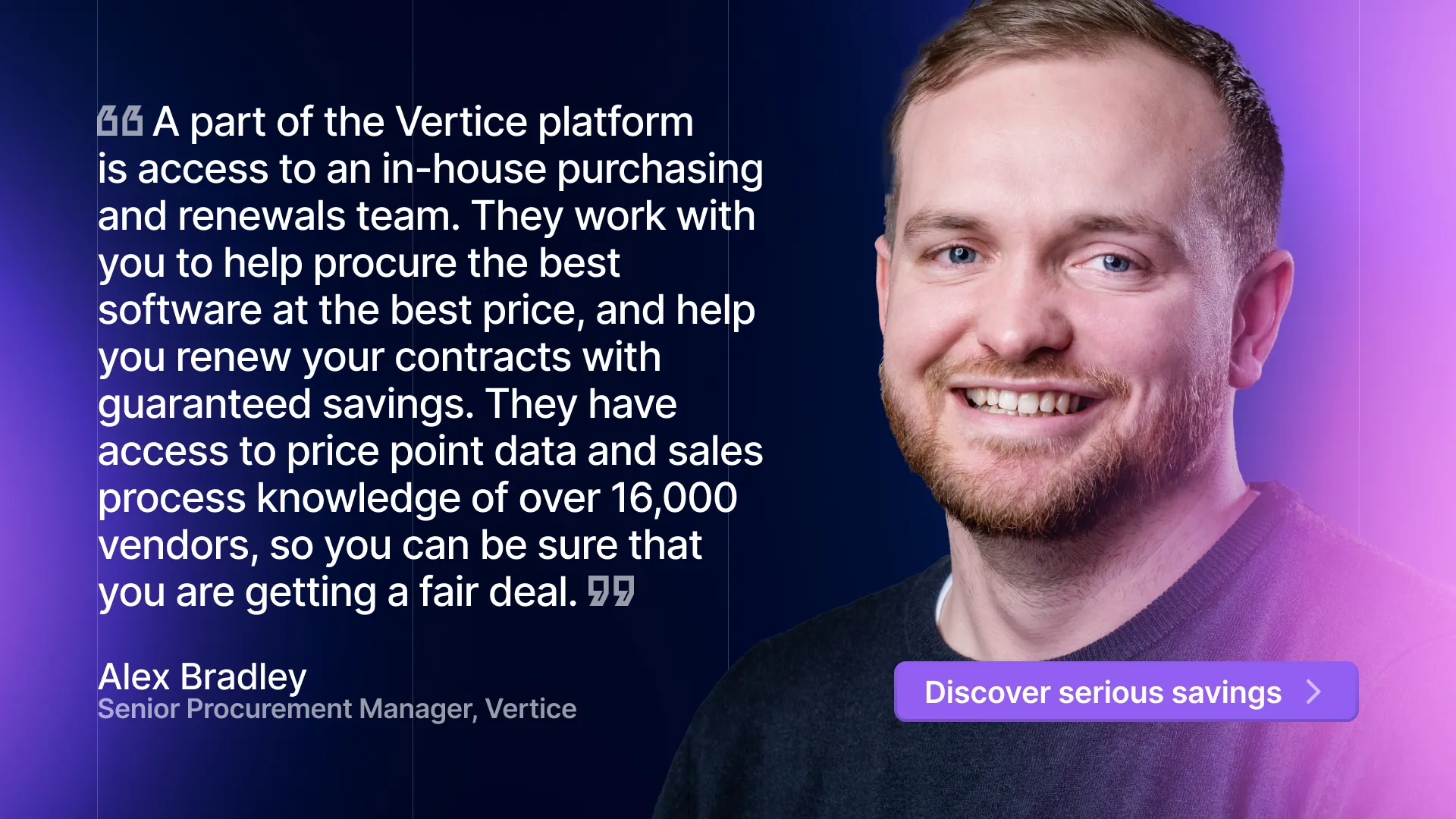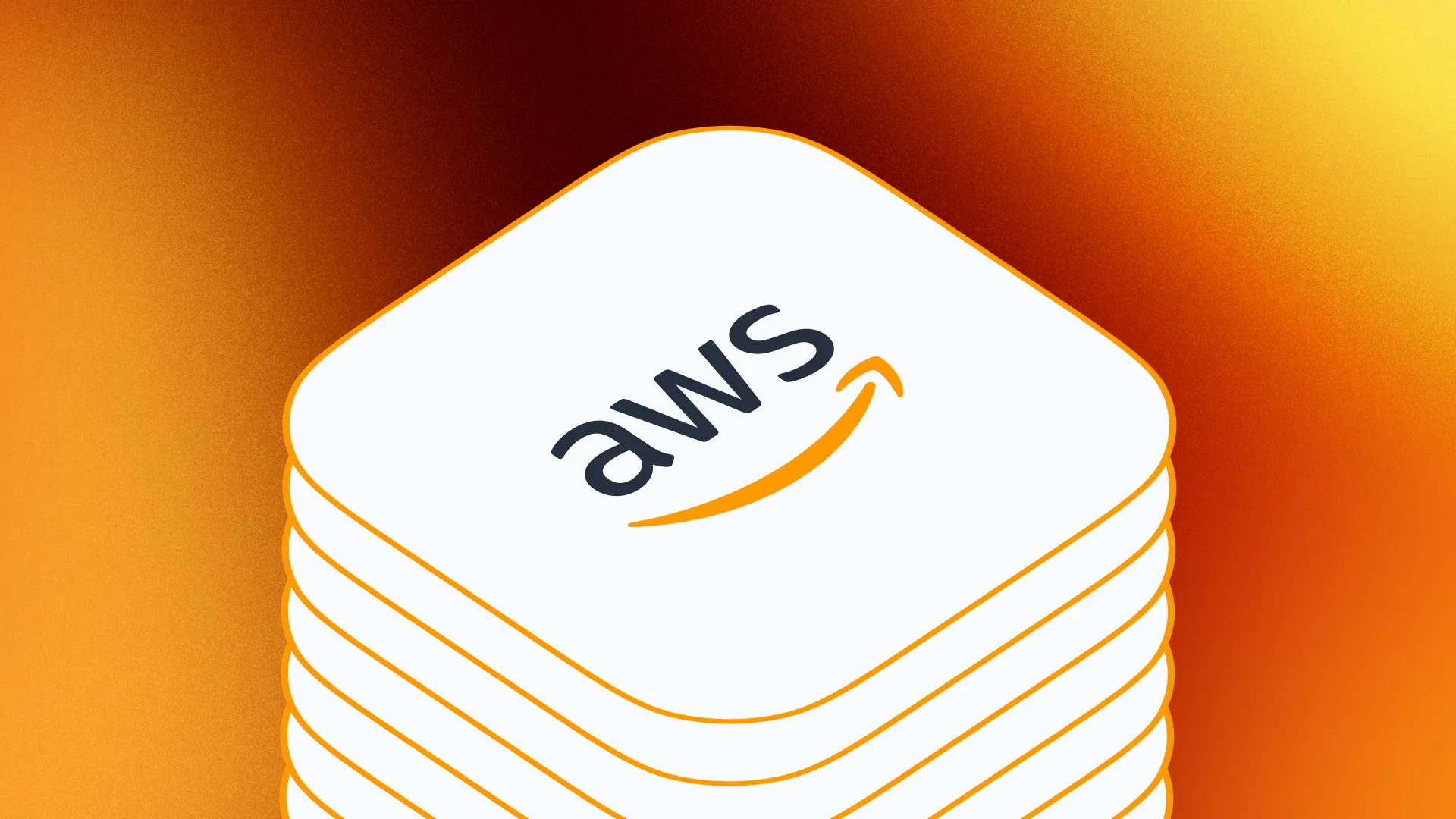



Take a self-guided tour of the platform.
Wondering where your cloud budget is really going?
See why Vertice is trusted by top procurement leaders.
Uncover the hidden costs draining your resources—and learn how to take back control.



The current state of business technologies and software sits at a strange crossroads. While many sectors face slow economic recovery, investment in SaaS and cloud continues to surge. Per-employee SaaS spend is climbing, and cloud budgets are growing year over year.
On the surface, it looks like progress – but a closer look tells a different story.
Nearly a third of cloud spend is wasted. SaaS vendors are raising prices faster than inflation while offering less in return. And as spend outpaces modest IT budget growth, many businesses risk overspending themselves into financial strain.
So, are these costs truly justified? Or is inefficient spend quietly draining resources from more critical areas?
The opportunity is clear: don’t spend more – spend smarter. Reclaiming wasted SaaS and cloud spend could be your edge in an increasingly competitive landscape.
Create lean and efficient tech stacks
The concept of focused and streamlined working practices with little fluff is nothing new. The trouble is, spend management has struggled to holistically adopt this mindset, hiding significant cost and budget benefits as a result. It’s understandable; the holistic and in-depth data needed to make key decisions to create efficiency is rarely readily available.
What’s more, SaaS vendors typically obscure the best prices and discounts.
With competition fiercer than ever and SaaS seen as a key lever for growth, many companies end up with fragmented tooling and decentralized buying decisions – classic signs of maverick spend. The result? Redundant licenses, inconsistent pricing, and little visibility into what’s actually in use.
But if you can make it happen, a lean and efficient tech stack reaps serious rewards. In fact, we’ve outlined exactly how to reduce the cost of your revenue stack by eliminating wasteful tools and duplications—leading to lower spend and higher ROI.
But how do you achieve this with SaaS and cloud spend – especially when the pressure is on for boosting SaaS operating margins for efficiency?
Let’s take a look at some key points:
Re-negotiate upcoming contracts with discounts top-of-mind
The truth is that 90% of companies overpay for their SaaS contracts by between 20 and 30%.
Shocking, right? Knowing this, it’s evident that a primary avenue for spending better is to look at upcoming contracts with a focus on achieving discounted rates. But how?
- Negotiating early pays dividends, as you have more time to discuss pricing options and aren’t backed into a corner by cut-off limits (vendors know this).
- Consider multi-year agreements. These offer significant discounts over single-year contracts.
- Can you be flexible with payment options? Smaller vendors typically want immediate cash flow, so paying upfront could give you a discount over an instalment plan.
- Don’t be afraid to push back and question the figures you’re quoted. If working with a multi-feature platform, what are the cost breakdowns per feature? Get granular with the quotes, and you can fine-tune them for more savings.
Above all though, it’s crucial to fully understand the needs of your business when it comes to tech. This stops you accidentally including features and options in your contracts that you don’t, and won’t, need.

Know the usage statistics of each product
If people aren’t using the tech, what are you paying for? Getting to the answer requires some deeper investigation.
- Which team uses which product, and how much do they use it? This is a good indicator of how integral any piece of tech is to their work, and if any are underutilized.
- Has there been a significant drop-off in usage since initial onboarding? You might see that all the ‘seats’ have been taken, but are they being regularly used?
- If teams aren’t using a company-mandated tool, why? Are they using shadow IT or shadow AI instead?
- If it’s a multi-feature product, like a CRM, which features are used the most? And which are largely ignored?
- Are you paying for the same features across different pieces of software? For example, you might be paying for a specialist social media scheduling tool like Buffr, when there is one included in your HubSpot instance.
- Is the tech being used across your regional/global offices, or are you paying for software with duplicate instances or that serve the same business need? For example, your US team uses TeamViewer, but your UK team uses Zoom. Can you consolidate these?
Discovering the usage stats generally comes from either department feedback, or from the product itself. However, relying solely on spreadsheets and manual tracking often lead to blind spots – which is why it's time to ditch the spreadsheets when it comes to managing SaaS.
Are you utilizing your cloud commitments efficiently?
Cloud computing is an area of serious investment, but also serious wastage. Efficient and diligent spend monitoring is key here to avoid it getting out of control.
- Are you using On-Demand Instances, or Reserved Instances (RI's)? RI’s offer significant discounts compared to On-Demand, but require more of a commitment, a longer-term strategy of what you need, and can’t be canceled.
- RI’s that are going unused can be a financial drain (you’re paying for nothing after all), and can be hard to identify. Minimizing these (in terms of committing to them in the first place, or trading/selling any unused ones) can benefit your bottom line.
- Do you have a holistic overview of your entire cloud spend, including individual product breakdowns? As your cloud requirements grow, the chance of superfluous products and unoptimized spend increases thanks to a more complex map of your cloud requirements. Keeping on top of your oversight here will help minimize this outcome and reduce the risk of unmanaged SaaS applications being overlooked.
Can you adopt different usage models?
A subscription payment system is the go-to model for SaaS tech. But have you considered alternatives that could be cheaper at the cost of some usage restrictions?
- Is a blanket subscription model best for your business? Does your vendor offer alternatives, like a tier system, or a pick-and-choose subscription system?
- Can you limit users to drive down any costs?
- Is it possible to adopt a usage-based pricing model? For tech that is integral but used less regularly than others, this could create serious savings.
Vendors tend to openly advertise subscription models, but many also have different usage models available to discuss. It’s worth asking your vendor about other options during negotiations.
Obtaining discounted rates requires a lot of information and expertise
If you can distill these ideas, you will be able to optimize your SaaS and cloud spend far more effectively than your competitors. But the fact of the matter is, it’s much easier said than done. You need:
- Complete visibility over all your onboarded tech, and which teams are using them.
- Transparent and in-depth usage stats, including up-to-date numbers.
- A tighter grip on your SaaS contract management to avoid missed renewals and pricing surprises.
- The time and commitment to enter longer-term negotiation periods.
- A smart approach powered by SaaS procurement software that automates and optimizes these complex decisions.
Even with a dedicated FinOps or procurement team, the information they need is likely as murky as driving through pea-soup fog with the lights off. Not ideal when trying to make informed purchasing decisions.If only there was something placed for just this… (you know where this is going).
Optimize your SaaS and cloud spend with Vertice
The Vertice platform exists specifically to unlock serious savings from both your SaaS and cloud spend. Uniquely, both can be done from one platform - meaning that you can gain holistic control over your entire tech spend easily and with extreme clarity.
Take a quick look at our SaaS purchasing platform, and our Cloud Cost Optimization features.
Empowered by the Vertice platform, you can supercharge your business by unlocking significant savings from your tech that can be reinvested elsewhere. As SaaS prices rise and spending increases for 2024, we say don’t spend more - spend better.
.webp)




.webp)










